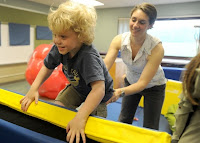Best Treatment Options for Asperger’s & High-Functioning Autism

"What are the best treatments for children on the autism spectrum (those that are high functioning)?" The core traits of Asperger’s (AS) and High-Functioning Autism (HFA) can't be cured. But, many kids on the autism spectrum grow into happy, well-adjusted grown-ups. Most of these young people will benefit from early specialized interventions that focus on behavior management and social skills training. Certain medications and supplements can also help with associated symptoms (e.g., anxiety, sleep problems, etc.). Your physician can help identify resources in your area that may work for your “special needs” son or daughter. AS and HFA treatment options include the following: 1. Applied behavior analysis: Applied behavior analysis (ABA) is the applied research field of the science of behavior analysis and supports a wide range of treatment strategies. ABA is widely recognized as a safe and effective treatment for kids on the autism spectrum. It has been endorsed
